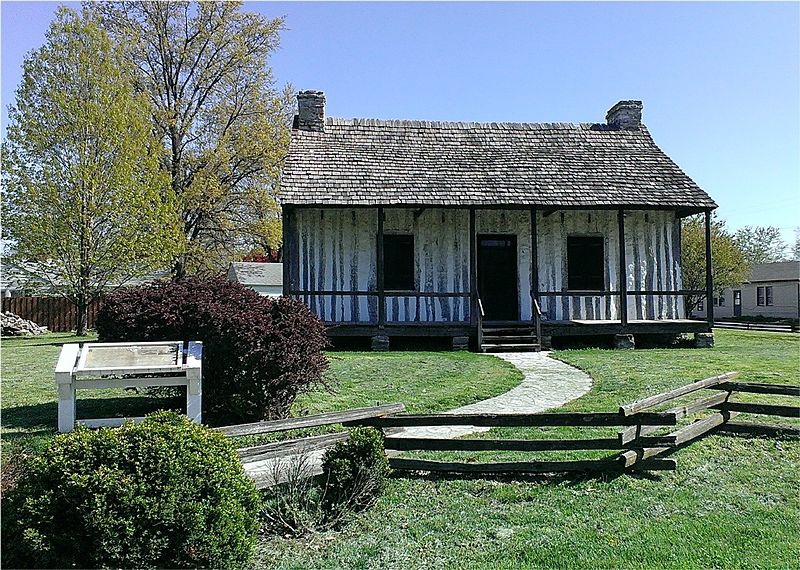
Martin Boismenue's house was built around 1790, in the typical French style, with pillars set on stones supporting the swooping roofline. Fireplaces are at either end, and the deep porches, or galleries, on the front and back invited socializing. (Photo courtesy of Creative Commmons)
Town was heart of France's trade along Mississippi
In the late 1600s, France controlled enormous territories in North America. Voyages of exploration leaving Montreal ranged through the Great Lakes and down the Mississippi River. The town of Cahokia, Illinois, served as the heart of the French trading system along the Mississippi River for many years after its mission was founded in 1682. St. Louis was still a village under Spanish control across the river in Missouri, and New Orleans, far to the south, would not exist for nearly forty years.
French explorers brought fur traders and priests with them. Historical records show that Pensoneaus traveled with Robert, Cavalier de La Salle, on voyages along the Mississippi River and its tributaries in 1682. Later, in the 1790s, three Pensoneau brothers would settle there: Louison, Etienne, and Louis.
Visitors to Cahokia often wrote that life there resembled 17th Century France more than contemporary times, reflecting customs their ancestors had brought with them to the New World. The French settlers designated four hundred of acres of Cahokia to be held as Commons. The land was kept as woodlands, where villagers and the local Indians were free to fish, hunt, graze horses, and take firewood. Farmland was not fenced and was farmed collectively, though lots were privately owned. The land was divided into long strips running east from the riverbank and uphill toward the bluffs. That way, each habitant, or landowner, had access to low-lying fields as well as higher land for grazing, and wooded hillsides.
The Mississippi River often flooded the low-lying land of Cahokia, leaving inches of silt each time and making the soil famously rich and productive. American settlers in the area called it the American Bottoms, and early settlers built fortunes trading crops, furs, meat, wine and other goods along the river system, then eventually at New Orleans markets, and on to Europe.
Cahokia came under American jurisdiction as part of the Northwest Territories in 1787, and Illinois became a state in 1818. Well past that time, up through the 1830s, the St. Clair County court system operated in French and some French customs and laws – such as slavery – were allowed to continue for decades.
Not only was the church central to community social life, but also to political structure. The landowners of the town, or habitants – later called farmers, in English – met after mass on Sundays to debate and vote on a wide range of matters. The territorial law of 1799, drafted in French, sanctioned these meetings as the Cahokia Assembly and gave it the right to act “in ad hoc, consensual fashion,” to elect officials and handle auctions, announcements, estate sales, and other matters.
Houses in the town were clustered together so neighbors could socialize. Afternoons were whiled away playing cards, and dances were held many evenings of the week. Each house usually was located toward the front of the lot, behind a six-foot high cedar or oak fence, with the posts set vertically. The roofs swooped down in long curves to form deep porches, or galleries, on the front and back, with posts supporting the edges sunk into the earth or set onto stones. This left room behind the house for a vegetable garden, orchard, henhouse, cow barn, pigsty, stable, baking oven, well, and sometimes slave quarters and a free-standing kitchen.
Around 1810, French landowners began to fence their individual holdings, and in 1814, some commonly held land was sold into private ownership. The old French way of life was beginning to fade.
